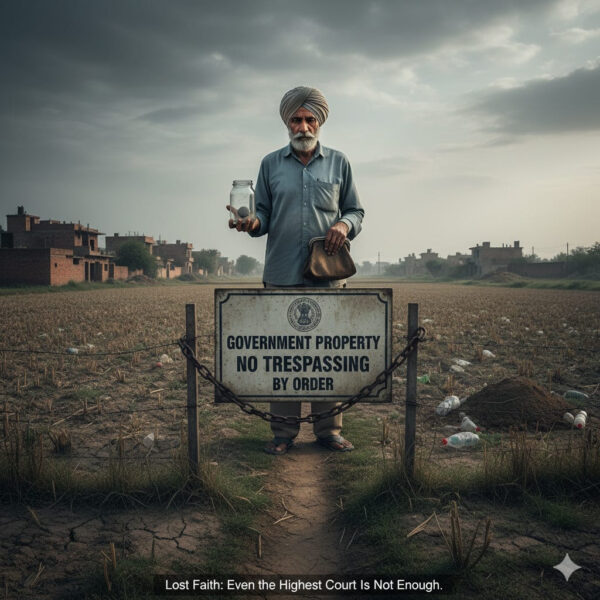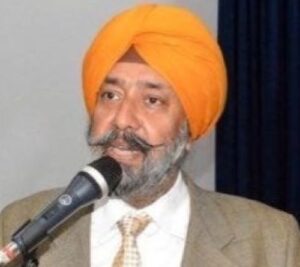 On 14 October 2025, the Supreme Court of India heard an application that could reshape the future of investor restitution in the country. The Sahara Group, backed by the Adani conglomorate, sought permission to sell nearly 88 Sahara-owned properties—including marquee assets such as Aamby Valley—to generate funds that would be deposited in the SEBI–Sahara Refund Account. The Apex Court did not summarily reject the proposal. Instead, it issued notice to SEBI and the Union Finance and Corporate Affairs Ministries, and fixed the matter for further hearing on 17 November. In other words, the Supreme Court signalled that large-scale fraud recovery would once again happen only under its watch.
On 14 October 2025, the Supreme Court of India heard an application that could reshape the future of investor restitution in the country. The Sahara Group, backed by the Adani conglomorate, sought permission to sell nearly 88 Sahara-owned properties—including marquee assets such as Aamby Valley—to generate funds that would be deposited in the SEBI–Sahara Refund Account. The Apex Court did not summarily reject the proposal. Instead, it issued notice to SEBI and the Union Finance and Corporate Affairs Ministries, and fixed the matter for further hearing on 17 November. In other words, the Supreme Court signalled that large-scale fraud recovery would once again happen only under its watch.
It was a familiar moment. India, in particular Punjab, has seen it before.
2. We Have Seen This Before: The Ghost of Pearls Group (PACL)
A decade ago, another financially catastrophic titan—bigger in scale and even deeper in social impact—landed at the Supreme Court’s doorstep. Pearls Agrotech Corporation Limited (PACL, popularly known as Pearls) was not just a scam; it was India’s largest-ever illegal mobilisation of public deposits. More than 5.5 crore investors, many from rural and middle-class backgrounds, were lured through a network of 2.3 million agents into “land investment” and “agro-forestry” schemes that promised extraordinary, income tax-free returns, claiming that the revenue was “agricultural” income and therefore exempt. PACL collected approximately ₹49,100 crore—without any regulatory approval.
When the scam collapsed, properties surfaced across 10 states, money had been diverted abroad—especially to Australia, and the land was buried under shell companies, benami holdings and complex layering. The Supreme Court stepped in, determined to prevent chaos. What it did next was historic.
3. How the Supreme Court Took Control: The 2016 Lodha Committee Order
In Civil Appeal No. 13301 of 2015 (Subrata Bhattacharya v. SEBI), the Supreme Court issued a landmark order on 2 February 2016, creating a similarl centralised mechanism for disposal of PACL properties and repayment to investors. The exact words still matter:
“SEBI shall constitute a Committee for disposing of the land purchased by the Company so that the sale proceeds can be paid to the investors… Hon’ble Mr. Justice R.M. Lodha, former Chief Justice of India, would be the Chairman.”
The Court did not stop there:
“It would be open to the Hon’ble Chairman to do whatever he thinks proper for disposal of the land and disbursement of the proceeds…”
And, most crucially:
“The decision with regard to sale of property of the Company by the Committee shall not be interfered with by any Court.”
In one stroke, the Court removed all jurisdictional ambiguity. No High Court, no civil court, no tribunal, and—by implication—no State government could sell PACL property. The Supreme Court took full command. It was decisive. It was powerful. It was meant to work.
But it didn’t.
4. What the Lodha Committee Actually Did: Progress, Recoveries, Refunds
To its credit, the Justice Lodha Committee undertook painstaking work. With the help of CBI and SEBI, it collected and digitised nearly 44,000 property title documents. It attempted e-auctions. It experimented with expressions of interest. It dealt with third-party encroachments, pending litigation and benami ownership.
It recovered:
₹369.20 crore from Australia (through court proceedings),
₹308.04 crore from PACL bank accounts,
₹98.45 crore from fixed deposits,
₹14.64 crore from auction of 75 vehicles,
₹19.91 crore from government comulsory land acquisitions of PACL land.
It then began the long process of refunds—starting with the smallest investors. By March 2025, the Committee had refunded ₹1,163.03 crore to 22,16,132 investors, but only those whose claims were up to ₹20,000.
And that is where the optimism ends.
5. The Shocking Contrast: ₹49,100 Crore Collected vs ₹1,163 Crore Refunded
The real picture is brutal. PACL took nearly ₹49,100 crore. The Justice Lodha Committee has returned just over ₹1,100 crore. More than 5 crore investors remain either unpaid or barely compensated. The Committee has repeatedly explained the obstacles: fragmented ownership, overlapping claims, forged documents, illegal sales, litigation, federal attachments and absence of clear title. Properties exist on paper but are unsellable in practice.
Even with Supreme Court backing, SEBI’s machinery, CBI’s records, and ED’s attachments, the process has crawled. The largest fraud in India’s history has produced one of the smallest restitution rates imaginable.
6. Punjab at the Heart of the Scam: Geography, Emotion and Scale
Nowhere was the impact more concentrated than in Punjab. PACL was born in Punjab. The empire was built from Punjab. Its promoters were local. Its land banks in the periphery of Chandigarh, especially Mohali, Kharar, Banur, Ludhiana and Sangrur were enormous. Investors included farmers, ex-servicemen, teachers, labourers and elderly pensioners. For decades, PACL projected itself as a “Punjab success story”. When it crashed, the psychological and financial devastation across the State was unmatched.
If any State had the political, moral and emotional reason to act, it was Punjab. And it did.
7. The State Did Not Sleep: Punjab’s Proactive (and Genuine) Initiative
Much is generally said about government apathy. In this case, that accusation would be unfair. In 2022 and 2023, Chief Minister Bhagwant Mann made public promises to “acquire and auction” Pearls properties to repay investors. Even the word “confiscate” was publicly used. Deputy Commissioners were ordered to identify land, fence it, put up warning hoardings, block transactions and stop encroachments. “Red entries” were made in revenue records to freeze future ownership changes, or creation of fresh encumbrances. Over 2,200 properties were reportedly identified. District officials worked with SEBI lists and CBI inputs. For once, the State machinery moved.
And still—nothing reached the investors.
8. When Good Intent Meets Legal Wall: Why Punjab Still Could Not Sell Anything
Punjab’s efforts were authentic and purposive, but they collided directly with the Supreme Court’s exclusive mandate of 2016. The Lodha Committee alone can sell PACL property. Its decisions “shall not be interfered with by any Court.” Naturally, they cannot be interfered with by the State either.
Therefore, even with an honest intent, Punjab argubaly had no legal power to finalise an auction or transfer title. The State’s action, though bona fide, was prima facie contrary to Supreme Court directions. In effect, its genuine effort was thwarted by lawful orders.
9. The Multi-Agency Illusion of Action: Many Players, Little Result
On paper, the system looks powerful. SEBI issues orders. CBI files FIRs. ED attaches assets. Punjab Vigilance initiates parallel investigation. District Collectors block transfers. The Supreme Court monitors progress through status reports. And yet, investors remain unpaid. Even worse, some illegal private unregisterd or “power-of-attorney” transfers or “sales” of PACL land have occurred under everyone’s nose.
In March 2025, the Lodha Committee flagged nearly 50 unauthorised plot sales in Mohali’s Sector 104—some at one-third of market value. Despite red entries and hoardings, people were quietly buying and selling Pearls land. If properties are slipping through the cracks even under Supreme Court supervision, what does that say about India’s enforcement capacity?

10. The Human Cost: Investors Lost Money, Time, and Faith
Behind every statistic lies a story of loss. Farmers sold their fields. Pensioners invested life savings. Families mortgaged homes. Agents were neighbours and relatives, and the managers decorated former army officers. Investors trusted because the scheme looked legitimate: offices, brochures, land allotment letters, advertisements, political connections.
Today, many of those investors have died waiting. Others no longer believe in the State, the police, or even the judiciary. When justice comes this slowly, it feels like injustice. When recovery takes decades, it feels like denial. When institutions appear active but deliver nothing, it feels like abandonment.
11. The Deeper Pattern: Why India Keeps Failing in Big Frauds
Pearls is not an exception. It is the rule. Sahara, Saradha, Rose Valley, SpeakAsia, NSE co-location, crypto scams—the pattern is painfully consistent. Influential individuals build massive agent networks, raise money outside regulation, buy land and influence, route funds abroad, run parallel financial systems. When the bubble bursts, agencies swarm, press conferences are held, and committees are formed. Then? Files move. Hearings continue. Attachments happen. Refunds trickle. Victims fade away. The scamsters often re-emerge in new avatars.
India punishes late. It refunds even later. It rarely reforms.
12. The Way Forward: A Lawful, Coordinated, Results-Based Model
The Supreme Court must remain at the centre. But judicial control is not the same as operational execution. Courts can authorise. They cannot bulldoze encroachments, update revenue records, or manage auctions. For mega-scams, India needs a coordinated execution machinery with legal clarity and administrative power.
In Punjab’s case, there is a lawful path. Where PACL land still stands in the company’s name and exceeds ceiling limits, the State can invoke the Punjab Land Reforms Act, 1972. A Special Collector with State-wide jurisdiction can be appointed. Surplus area can be declared. Under the Punjab Utilization of Surplus Area Scheme, 1973, land can be allotted to sitting tenants or landless Scheduled Caste villagers. But this must be done with Supreme Court oversight to ensure investor claims are preserved. In this way, social justice and restitution can work together—not against each other.
13. Conclusion: The Supreme Court Can Steer, But Someone Must Drive
The 14 October Sahara–Adani hearing is a second chance. The Supreme Court appears ready once again to centralise restitution and prevent chaos. But the Pearls/PACL case shows that central control without coordinated execution produces paralysis. Even the best judicial intentions will fail if agencies work in silos, if States are not integrated, if titles are not cleaned, and if illegal transactions continue unchecked.
India cannot afford another “daylight robbery in slow motion.” The Supreme Court can set the direction. But unless the system beneath it is re-engineered to act swiftly, lawfully and collectively, the story will repeat under new names—with the same victims.
The question is no longer whether the judiciary cares. It does. The question is whether the Indian State can finally learn to deliver justice not just in principle, but in practice.
Until then, every Sahara or Pearls will end the same way: crores of Indians waiting, watching, and wondering why even the highest court in the land is not enough.
Sidhu Sahib Your ownSikh Community needs urgent help in India and abroad It has become leaderless and godless Our Gyrdwsras are now “TimHortons” We do not have email addresses of 800 of themabroad Let us use the Jewish Model of organization You lead Sodhi Do reply Sodhi SevaDar 92-99